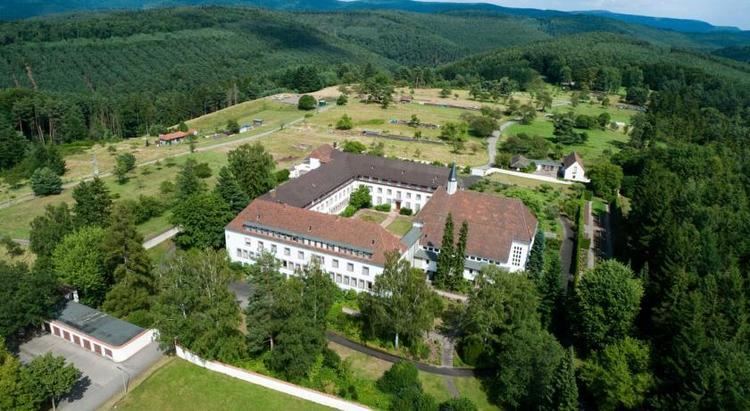Elevation 363 m (1,191 ft) Local time Wednesday 8:17 AM | Municipal assoc. Lambrecht (Pfalz) Time zone CET/CEST (UTC+1/+2) Population 1,508 (31 Dec 2008) | |
 | ||
Weather 3°C, Wind SW at 10 km/h, 95% Humidity Points of interest Erfenstein Castle, Cuckoo Railway, Breitenstein Castle | ||
Esthal is an Ortsgemeinde – a municipality belonging to a Verbandsgemeinde, a kind of collective municipality – in the Bad Dürkheim district in Rhineland-Palatinate, Germany.
Contents
- Map of Esthal Germany
- Location
- Constituent communities
- History
- Religion
- Municipal council
- Coat of arms
- Culture and sightseeing
- References
Map of Esthal, Germany
Location
The municipality lies on a plateau in the Palatinate Forest. It belongs to the Verbandsgemeinde of Lambrecht, whose seat is in the like-named town.
Constituent communities
Esthal’s Ortsteile, or Annexen, as they are known, are Esthal, Breitenstein, Erfenstein and Sattelmühle.
History
In 1380, Esthal had its first documentary mention as Estall. It was held until 1794 by the Lords of Erfenstein, whose seat was at the nearby castle.
Religion
In 2007, 71% of the inhabitants were Catholic and 17% Evangelical. The rest practised other faiths or none.
Municipal council
The council is made up of 16 council members, who were elected at the municipal election held on 7 June 2009, and the honorary mayor as chairman.
The municipal election held on 7 June 2009 yielded the following results:
Coat of arms
The German blazon reads: Unter silbernem Schildhaupt in Schwarz ein schwebendes kugelbesetztes goldenes Tatzenkreuz.
The municipality’s arms might in English heraldic language be described thus: Under a chief argent sable a cross pattée couped, the lower arm longer than the others, and in each end a roundle Or.
The arms were approved in 1954 by the Mainz Ministry of the Interior and they date from a 1772 court seal.
